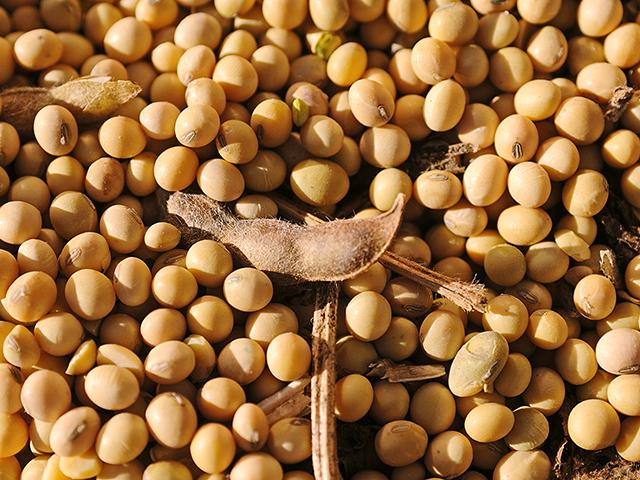Inside the Market
U.S. Soybean Prices Face Winter Challenges
Unless you have livestock to care for or equipment that needs repair, winter can be a slower time on the farm, good for hunting or helping a neighbor clear a drive of snow. For corn and soybean prices, trading also tends to turn quieter in winter months as traders' attentions turn to South America.
Each year that passes, South American row-crop production increases, and unless some surprise emerges, 2022-23 will mark the fifth year Brazil stands as the world's largest producer of soybeans. I find it interesting the traditional seasonal tendency for soybean prices to trade gradually higher after the fall U.S. harvest until late June has largely remained intact, and I have to wonder if that won't change one day. The seasonal tendencies of U.S. corn and soybean prices don't get much press but are important factors that coincide with diminishing U.S. supplies through the winter season.
At the time of this writing, USDA is expecting Brazil to produce a record soybean crop of 5.58 billion bushels (152 million metric tons) in early 2023, a significant threat to U.S. export demand if the estimate proves true. This is not the first time the U.S. has faced a record soybean crop from Brazil.
Since 2010, Brazil has achieved nine record soybean crops, and this next harvest could be number 10. In only two of the nine years, 2010 and 2017, can we say Brazil's harvest contributed to U.S. soybean prices not reaching their normal seasonal highs; 2010 and 2017 were also two years in which the U.S. had good crops following Brazil's record crops. Soybeans' seasonal tendency can also be disrupted by factors other than Brazil. The trade war with China in 2018 and the global pandemic in 2020 are two recent examples.
P[L1] D[0x0] M[300x250] OOP[F] ADUNIT[] T[]
The main lesson from recent history is a record soybean harvest from Brazil, by itself, isn't always enough to short-circuit U.S. prices. The more bearish combination of a record Brazilian crop followed by a successful U.S. start to the new-crop season does put soybean prices at risk of trading lower earlier than usual.
In the current 2022-23 season, USDA is estimating U.S. ending soybean stocks at 220 million bushels, the lowest in seven years. The export estimate of 2.045 billion bushels is the lowest in three years and already anticipates some loss of business to Brazil.
China's demand will have much to say about how well soybean prices hold up in 2023, and so far, market clues of soybean demand in China look bullish despite China's recent problems with COVID-19. Near the end of December, March soybeans on China's Dalian Commodity Exchange posted their highest close in six months, the U.S. equivalent of $19.50 a bushel.
With new soybean supplies on the way from Brazil, it's difficult to say if U.S. soybean prices will hold up until June 2023. For the moment, demand for U.S. soybeans is remarkably strong, and it's hard to argue with March soybean prices that just finished the year above $15 for the first time in history.
**
-- Read Todd's blog at https://about.dtnpf.com/…
-- You may email Todd at todd.hultman@dtn.com, or call 402-255-8489.
[PF_0223]
(c) Copyright 2023 DTN, LLC. All rights reserved.




